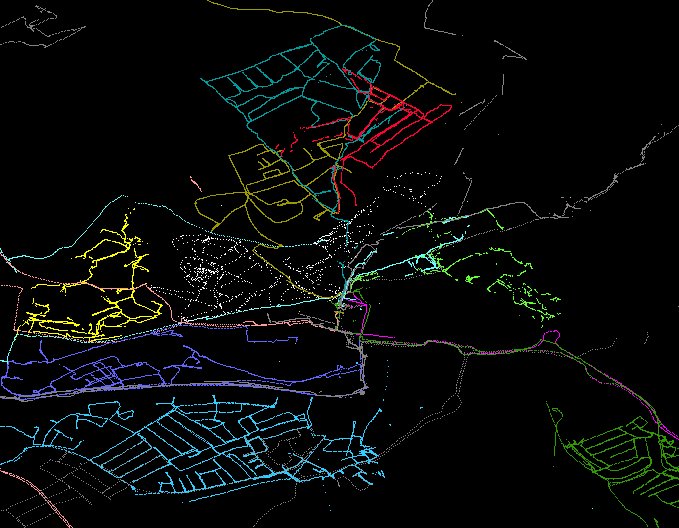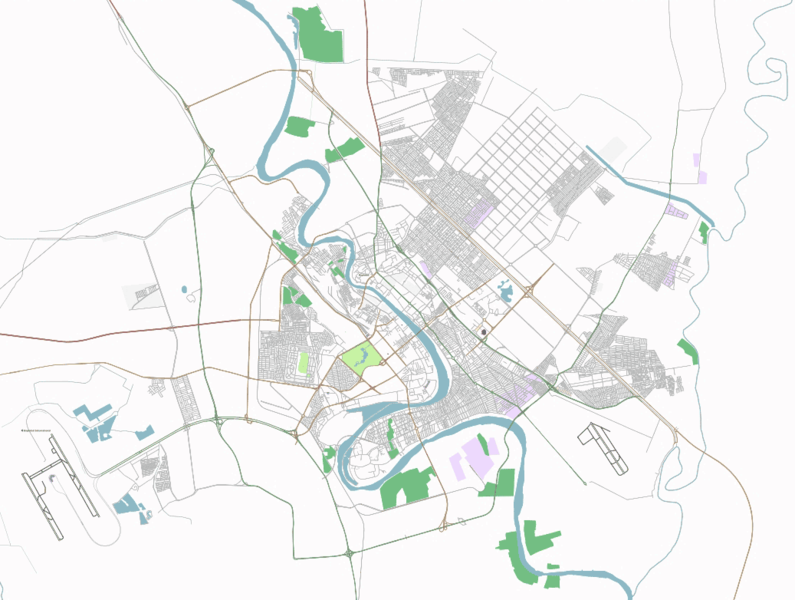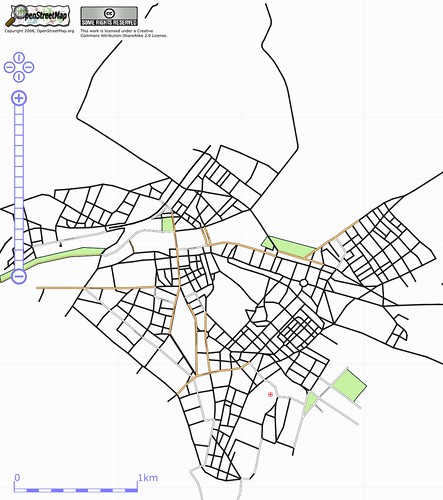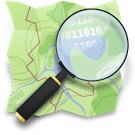The debate surrounding the use and licensing of OSM’s data that was reported in last week’s round-up has continued in earnest this week, resulting in an explosion of traffic on the OSM legal mailing list:

There are several components to the problem. First, there is the issue of copyright. Currently each individual contributor retains the copyright to their contributions. This situation is unlikely to change, as in many countries, such as Germany, it is simply not possible to transfer copyright held by an individual to another body. Next is the issue of the OSM license. All the data held by OSM is licensed under the Creative Commons Attribution-Sharealike 2.0 license (CC-by-SA). CC-by-SA means that anyone can use OSM data for anything they like, provided they give attribution to the creator(s) of the data (the guys with the GPS units and bicycles) and providing that they apply the same license to any derivative works that they make and distribute. I think I speak for the whole OSM community when I say that we all want the best free map of the world we can get; how we define freedom and how we get there is another matter. Richard Fairhurst gives his opinion on some of the problems with the current OSM license:
No webmapping company or cartographer will contribute any data back to OSM except through the goodness of their own heart. That’s because CC-SA doesn’t require you to publish the source code, just the final product.
So if a cartographer produces a beautifully illustrated map using OSM data and then redistributes the map, they are required to redistribute it under the CC-by-SA license. This would make selling the derived work very difficult and Richard and others have suggested that this factor will stop cartographers from using OSM’s data in the future. Instead, they will go to organisations from whom they can buy data under licenses that allow them to create works that they can use commercially, effectively bolstering the position of organisations who sell proprietary data. Frederick Ramm and Robert “Jamie” Munro also point out that this scenario contradicts OSM’s stated aim, to produce maps that are free of the “legal and technical restricions” that most geo-data is subject to.
Take another scenario, one in which a big provider of geo-data gets hold of OSM’s data-set, cleans it, augments it and then uses it to produce map tiles. The current CC-by-SA license does not require this organisation to release the augmented data back into theOSM data set , they would only release their finished product. Those who see this as a problem have suggested making a distinction between the source data (a planet dump for example) and a “rendered” work. It is suggested that the source data could be licensed so that any improvements have to be given back to OSM, whilst derived works would not need to be licensed under such a license, allowing more widespread use of OSM data.
This is a very brief round-up of a pretty complex problem that many people have strong opinions about. Whatever the final outcome of the debate is, it is going to play an important part in shaping the future of OSM. We’ll be meeting with some Creative Commons people in the next couple of weeks, so if you have any ideas about licensing, send a mail to the legal list, or take a look at this wiki page, and make sure your opinion is counted.
Almien published a list of interesting tags, based on the most recent Planet dump. One of my personal favourites is “wrong=oh yes!”, with “description=Official home of the President of The Philippines”, coming a close second. After seeing “blackadder:service=cobler” I know where I will be going to get my shoes fixed in the future, after which I can visit “blackadder:cuisine=fish” for a nice bit of seafood.
OSM@home is a project that uses distributed computing power to render SVG images of places from OSM data. You can browse through the different places here. Through the work of Barry Crabtree, J.D. “Dutch” Schmidt and others, the latest OSM@home client post-processes Osmarender data to produce images with beizer curves, like these:

There’s more information about the curve smoothing algorithm here and you can download the OSM@home client from here.
Free-Map – the countryside oriented open mapping project – now have a similar client that allows people to render Free-Map tiles (with really nice looking SRTM contours) at home. If you want to help out, you can get it from here.
The OSM Cartography meet-up on Saturday saw Artem, SteveC, Steve Chilton and Richard Fairhurst spend a few hours going through the Mapnik config file with the aim of improving the cartography produced by Mapnik. About 10 people met up in Oxford afterwards and there was some interesting discussion about cartography in OSM. Steve Chilton and Richard Fairhurst made the point that a lot of the discussions about rendering OSM data focus on getting as much data as possible onto the maps. They pointed out that the secret of cartography is to represent the information that is needed for a particular use case, and had some convincing examples of traditional cartographic products, like maps oriented towards cyclists, that don’t include many features at all, but succeed in conveying the information needed by the cyclist by choosing the most useful features. This is definitely something for OSM’s renderers to think about. As the database gets larger and more diverse, and the demand for cartographic outputs of OSM data gets greater its going to be increasingly important to carefully select the features that are represented on our maps.
Saturday’s “You know you got OCOSMD (Obsessive Compulsive Open Street Mapping Disorder) when….” thread, started by J.D. “Dutch” Schmidt has thrown up some funny suggestions, along the lines of “…when you read other peoples gpx files as blogs” or “… You forget to pick the girlfriend up from work, but remember the GPS”. It would be so much funnier if it wasnt so painfully true. There’s definitely a fair amount of obsessiveness in the OSM community. I’ve always found that you appreciate things a lot more when you start trying to do or make them for yourself – thats certainly the way its been for me with mapping. Thomas Walraet reported on a French project that’s taking the do-it-yourself ethos to the extreme, making their own GPS circuit boards:

The boards retail for around €100, with the board’s manurfacturers making no profit. More information is available in French, here.
Thats all for this week, keep tuned to OpenGeoData for all latest news from the world of Open Mapping.




